
Provence is a geographical region and historical province of southeastern France, which extends from the left bank of the lower Rhône to the west to the Italian border to the east; it is bordered by the Mediterranean Sea to the south. It largely corresponds with the modern administrative region of Provence-Alpes-Côte d'Azur and includes the departments of Var, Bouches-du-Rhône, Alpes-de-Haute-Provence, as well as parts of Alpes-Maritimes and Vaucluse. The largest city of the region and its modern-day capital is Marseille.
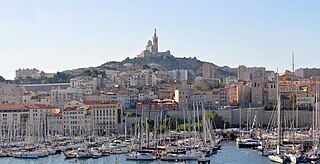
Bouches-du-Rhône is a department in southern France. It borders Vaucluse to the north, Gard to the west and Var to the east. The Mediterranean Sea lies to the south. Its prefecture and largest city is Marseille; other important cities include Aix-en-Provence, Arles, Martigues and Aubagne.

Vitrolles is a commune in the Bouches-du-Rhône département in the Provence-Alpes-Côte d'Azur region in southern France, located about 20.6 km (12.8 mi) from Marseille. It is the largest suburb of the city of Aix-en-Provence and is adjacent to its southwest side.

Anne-Louis Girodet de Roussy-Trioson, also known as Anne-Louis Girodet-Trioson or simply Girodet, was a French painter and pupil of Jacques-Louis David, who participated in the early Romantic movement by including elements of eroticism in his paintings. Girodet is remembered for his precise and clear style and for his paintings of members of the Napoleonic family.
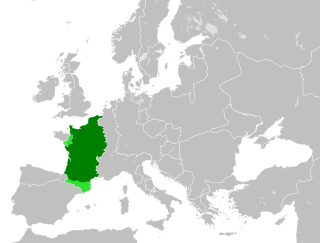
In medieval historiography, West Francia or the Kingdom of the West Franks constitutes the initial stage of the Kingdom of France and extends from the year 843, from the Treaty of Verdun, to 987, the beginning of the Capetian dynasty. It was created from the division of the Carolingian Empire following the death of Louis the Pious, with its neighbor East Francia eventually evolving into the Kingdom of Germany.

The Archdiocese of Aix-en-Provence and Arles is a Latin Church ecclesiastical territory or archdiocese of the Catholic Church in France. The archepiscopal see is located in the city of Aix-en-Provence. The diocese comprises the department of Bouches-du-Rhône, in the Region of Provence-Alpes-Côte d'Azur. It is currently a suffragan of the Archdiocese of Marseilles and consequently the archbishop no longer wears the pallium.

The Archdiocese of Marseille is a Latin Church ecclesiastical jurisdiction or archdiocese of the Catholic Church in France. The archepiscopal see is in the city of Marseille, and the diocese comprises the arrondissement of Marseille, a subdivision of the department of Bouches-du-Rhône in the Region of Provence-Alpes-Côte d'Azur.
Events from the year 1824 in France.

Jean-Baptiste Belley was a Saint Dominican and French politician. A native of Senegal and formerly enslaved in the colony of Saint-Domingue, in the French West Indies, he was an elected member of the Estates General, the National Convention, and the Council of Five Hundred during the French First Republic. He was also known as Mars.
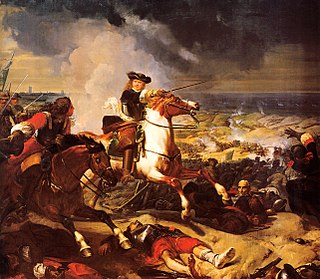
Charles-Philippe Larivière was a French academic painter and lithographer.
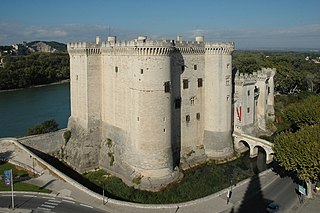
The historic French province of Provence, located in the southeast corner of France between the Alps, the Mediterranean, the river Rhône and the upper reaches of the river Durance, was inhabited by Ligures beginning in Neolithic times; by the Celtic since about 900 BC, and by Greek colonists since about 600 BC. It was conquered by Rome at the end of the 2nd century BC. From 879 until 1486, it was a semi-independent state ruled by the Counts of Provence. In 1481, the title passed to Louis XI of France. In 1486 Provence was legally incorporated into France. Provence has been a part of France for over 400 years, but the people of Provence, particularly in the interior, have kept a cultural identity that persists to this day.

Jean-François-Théodore Gechter was a French sculptor. A student of François Joseph Bosio and baron Gros, he is now most noted for his bronzes. He first exhibited in 1824, in a show of classical and mythological subjects. From 1830 he shifted to smaller sculptures and animal subjects, like Antoine-Louis Barye, another student of Bosio and Gros. He also had a talent for historical scenes with figures in elaborate costumes.
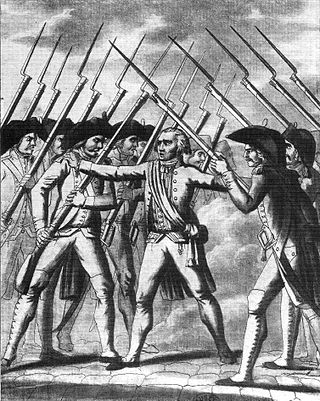
Jean Espariat was a French lawyer and politician. He served as the first Mayor of Aix-en-Provence in 1790, and again as the third Mayor from 1791 to 1792. Additionally, he helped create the department of the Bouches-du-Rhône and served as a member of the Legislative Assembly from 1791 to 1792.

Constant Ambroise Roux was a French sculptor.

Joseph Marie Philippe Thierry was a French lawyer and politician. He was deputy for Bouches-du-Rhône from 1898 to 1918. He was Minister of Public Works in 1913 and Minister of Finance in 1917. As Minister of Finance he introduced reforms that made the newly introduced income tax more progressive.
Jean-François-Marie d'Arquier de Barbegal (1761–1794), also known as de Baumelles, parliamentarian from Aix in the 18th century, was involved in the federalist movement of 1793 during the French Revolution.

Artists in Isabey's Studio is a painting of 1798 by the French artist Louis-Léopold Boilly, showing many artists who were influential under the French Directory. It was displayed with 529 other works at the 1798 Paris Salon, which was mainly noted for Gérard's Psyche and Cupid. It is now in the Louvre, whose collections it entered in 1911.

Romanticism was a literary and artistic movement that appeared in France in the late 18th century, largely in reaction against the formality and strict rules of the official style of neo-classicism. It reached its peak in the first part of the 19th century, in the writing of François-René de Chateaubriand and Victor Hugo, the poetry of Alfred de Vigny; the painting of Eugène Delacroix; the music of Hector Berlioz; and later in the architecture of Charles Garnier. It was gradually replaced beginning in the late 19th century by the movements of Art Nouveau, realism and modernism.

Jacques Joseph Thulis was a French astronomer. He was director of Marseille Observatory.























